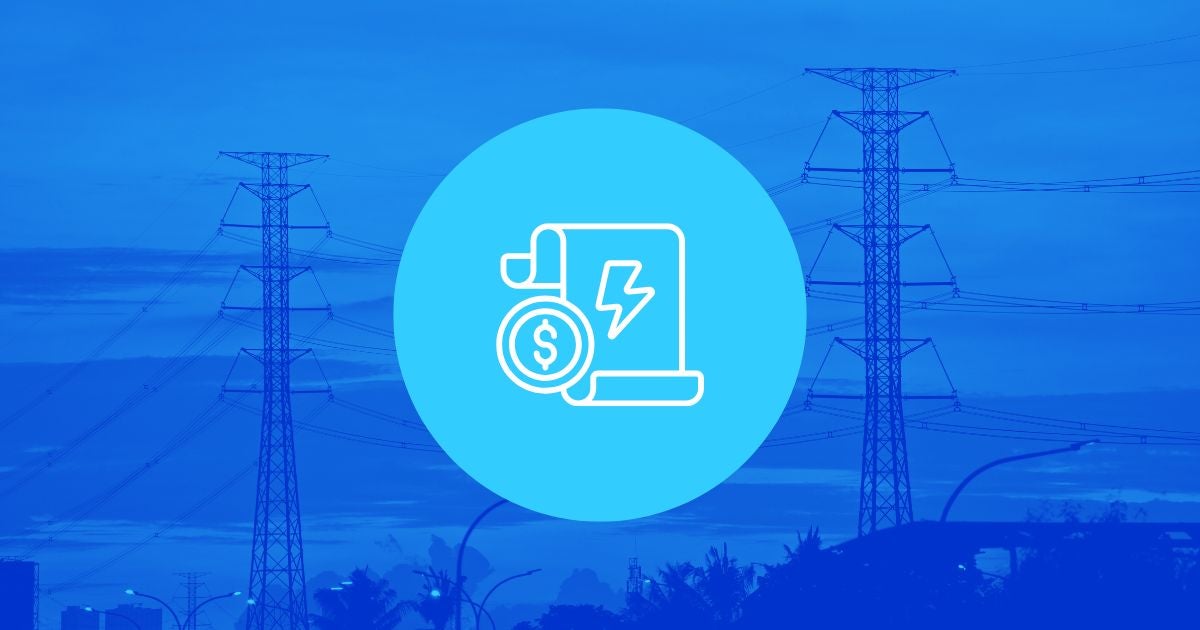
Data centers are popping up all across the nation, causing electric utilities to grapple with how to provide for these new power-hungry customers while managing costs — and North Carolina is no different.
A recent hearing at the North Carolina Utilities Commission focused on how to handle data centers, a.k.a. “Large Load” customers, who are driving up electricity demand and creating a “who pays for what” conundrum.
EDF put forward expert witnesses Jeff Bower and Karan Pol of Daymark Energy Advisors, who have experience working in states across the country grappling with the same problems. Our expert witnesses had two main recommendations in their written and oral testimony:
- Improve forecasts of data center load to avoid unnecessary investments and emissions; and
- Protect existing customers from bearing the brunt of cost impacts and reduce uncertainty around the data center buildout by using “large load tariffs.”
Achieving these objectives won’t be easy, but it’s critical that we develop sustainable solutions that insulate households while meeting the energy needs of this growing industry.
Large load tariffs
Across the country we are seeing many states attempting to limit the cost risks to their shareholders and customers by negotiating what are commonly called “large load tariffs” — custom rates and standardized contracts that utilities institute for large new projects above a certain threshold of annual electricity usage — which usually includes data centers. In other words, these are contracts that can protect households from footing the bill for the costs associated with data centers.
In North Carolina, this could take any number of forms. For example, stakeholders in Kansas came to agreement on the parameters of a structure and submitted it to their state commission for approval. In North Carolina, despite the announcement of a Clean Transition Tariff that Duke Energy worked on with a number of partners in May 2024, all such discussions have remained behind closed doors with no input from the public and no actual proposed tariff ever filed before the North Carolina Utilities Commission.
Fortunately, North Carolina has a good opportunity coming up to change that. Duke Energy recently filed notice that it will be initiating multi-year rate case proceedings before the end of 2025. These rate cases are exactly the kind of venue in which discussions about how to deal with data center load could be addressed in the proper context of what the impact is on other customer classes, especially North Carolina’s residential ratepayers.
North Carolina can simply direct utilities to meet with stakeholders and submit, as part of the rate case proceedings, a proposed tariff and contract structure for large data centers that mitigates uncertainty to other rate classes. Doing so would help North Carolina catch up with other states that have set clear rules to ensure households aren’t stuck with decades of costs if data centers never get built or shut down early.
Electricity load forecasting
Electricity loads can be difficult to forecast, and uncertainty can negatively impact both utilities and consumers. There are two things that help ensure accurate forecasts of energy load
- Protective tariffs are immensely helpful for getting projections of data center growth right. As states like Indiana have shown, putting in place a tariff directing that “industrial loads will ensure they pay for the grid upgrades needed to serve them and that those costs are not passed on to existing customers” can also lead to the number of data center projects dropping substantially, as more speculative projects drop out.
- For better load forecasting, North Carolina will likely need specific direction from the Utilities Commission in the Carbon Plan/Integrated Resource Planning docket, where Duke filed its latest plan on October 1. Additional filings are expected in spring 2026, hearings next summer, and an order by December 2026.
As our expert witnesses outlined, Duke’s forecasting methodology is very project-based and doesn’t have flexibility in accounting for uncontrollable external factors. For example, if an economic downturn occurred and made the completion of all the projects on our data center waiting list unlikely, the utilities’ ability to adjust their assumptions would be limited.
In addition, without utility transparency into that list of projects, third parties like EDF aren’t on an even playing field in the Utilities Commission proceedings to provide apples-to-apples alternative analyses.
What do we need to see from the Utilities Commission?
To keep infrastructure buildout and costs from data centers in check, our experts have two main recommendations for the North Carolina Utilities Commission:
- Improve transparency of how Duke reports on what data center projects are in the pipeline. One example we could consider: in Georgia, utilities are required to file a quarterly Large Load Economic Report in their own resource planning docket.
- Create a series of modeling checks to ensure that the new power plant investments the utility is proposing are indeed necessary and that they lower customers’ risk of paying for plants that become non-generating stranded assets.
Here’s how our expert witnesses put it in their testimony:
- Design scenario analysis to understand the impact of large loads
- Capacity expansion models perform complex calculations incorporating a broad range of system costs to identify the optimal portfolio for a specific future. By evaluating a carefully structured set of scenarios, utilities can identify the sensitivity of the results of the analysis to specific inputs. This can be helpful for identifying the “tipping point” when major investments are included in an optimized portfolio, which contributes to the broader Integrated Resource Plan (IRP) consideration by regulators and stakeholders.
- Conduct post-modeling analysis to identify least-regrets investments
- With sufficient sensitivity and scenario analysis, a resource planning process will produce multiple optimized portfolios. Rather than simply selecting one of the resulting buildouts to pursue, these model results can be used to identify common elements and inform discussions about the “least-regrets” investments. This should be a key objective of the IRP process when there is significant load uncertainty.
- Consider the value of options to delay large investments
- With rapidly evolving pipelines of new large load, and potential technology advancements that could mitigate the expected load growth, there is high value in “buying time” before committing to major investments, particularly electricity sources that emit greenhouse gas emissions, until more information is available. IRP processes should explicitly consider scalable solutions that add more capacity, including demand-side management programs, interruptible load programs (where customers receive incentives for agreeing to have their electricity usage temporarily reduced or shut off during peak demand periods), virtual power plants, investments to temporarily extend the life of existing resources, and importing electricity from other states/regions. Even if these resources are higher cost or have operational limitations, they may play an important role in a least-cost, least-risk resource portfolio in the face of load growth uncertainty. This is particularly true if these resources can enable the utility to avoid investing in polluting sources of electricity that are incompatible with long-term policy requirements.
Next steps
North Carolina is fortunate to have two key regulatory proceedings scheduled for 2026 that directly address the most pressing challenges posed by the rapid expansion of data centers: electricity tariffs and demand forecasting.
The Utilities Commission doesn’t need to have all the solutions upfront — it simply needs to convene stakeholders, facilitate meaningful dialogue and require a set of practical, consensus-driven improvements. Without action, North Carolina risks falling behind other states and exposing households in the state to higher energy costs.














